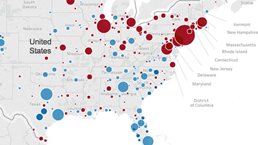Cities have powered the world economy for centuries. Large cities generate about 75 percent of global GDP today and will generate 86 percent of worldwide GDP growth between 2015 and 2030. Population growth has been the crucial driver of cities’ GDP growth, accounting for 58 percent of it among large cities between 2000 and 2012. Rising per capita income contributed the other 42 percent.
However, the world’s cities are facing more challenging demographics, and the days of easy growth are over. In the past, city economies expanded largely because their populations were increasing due to high birthrates and mass migration from rural areas. Both of those sources of population growth are now diminishing. Global population growth is slowing because of declining fertility rates and aging. At the same time, rural-to-urban migration is running its course and plateauing in many regions. How cities adjust to the new reality is important not only for their prospects but also for those of nations that will continue to rely on thriving cities for rising prosperity.
The double hit of slowing population growth and plateauing urbanization caused population to decline in 6 percent of the world’s largest cities—with the largest share in developed economies—between 2000 and 2015. From 2015 to 2025, we expect population to decline in 17 percent of large cities in developed regions and in 8 percent of all large cities. In the developed world, the urban population in Canada and the United States grew at a compound annual rate of 2.2 percent between 1950 and 1970 but dropped to only 1.0 percent from 2010 to 2015. That rate is expected to persist until 2025 and then to decline even further, to 0.8 percent from 2025 to 2035. Although the demographic shift is more advanced in developed regions, it also affects emerging regions.
This is a challenge to the economic prospects of cities that marks a distinct break from recent history. The past 50 years were truly unusual in demographic terms, as large cohorts of working-age populations fueled the growth of cities and nations. In the new demographic era, we are likely to see a much more fragmented urban landscape, with pockets of robust expansion but also areas of stagnant and declining populations. Cities’ growth prospects will reflect very different demographic footprints and dynamics shaped by their local birth and death rates, net domestic migration, and net international migration.
In a new report, Urban World: Meeting the demographic challenges, the McKinsey Global Institute (MGI) compares three developed countries and regions to understand the implications (exhibit):

Would you like to learn more about the McKinsey Global Institute?
- Japan. Japan’s challenges are the most acute of the three developed regions. Urban-population growth in Japan was 0.9 percent between 1990 and 2015, and only 0.6 percent between 2010 and 2015. Urban population is projected to be flat going forward. Some urban hubs continue to grow, while most surrounding cities are aging and experiencing slow or negative population growth. The populations of Nagoya and Tokyo are still growing, largely reflecting inward domestic migration; the city of Sapporo, however, has relatively slow population growth because of negative homegrown growth and relatively low inward domestic migration. The population of almost 40 percent of Japan’s cities declined between 2012 and 2015.
- United States. Overall urban-population growth in the United States is projected to decline slightly, from 1.3 percent between 1990 and 2015 to 1.0 percent over the next decade. The United States benefits from a higher fertility rate and greater migration than Japan and Western Europe. The US urban system is much more diversified and more dynamic than that of either Japan or Western Europe, with many large cities, a broad swath of middleweight cities, and many “niche” cities. And there is significant differentiation among cities that vary in their demographic footprints and dynamics. Raleigh, North Carolina, and Houston, Texas, are experiencing high population growth driven by all three factors. In contrast, Pittsburgh, Pennsylvania, and Cleveland, Ohio, are seeing their populations flatten or even shrink, and both have had to rethink their visions of the city.
- Western Europe. Urban-population growth in Western Europe was 0.7 percent annually between 1990 and 2015. It is projected to decline to 0.5 percent to 2025 and to 0.4 percent between 2025 and 2035. Like Japan and the United States, Western Europe is aging unevenly and is likely to experience more differentiation in the future. The capital cities of Berlin, London, Oslo, Paris, and Stockholm all have growing populations. However, many cities are already experiencing population decline. This includes cities in Germany (for example, Chemnitz, Gera, and Saarbrücken) and Italy (Genoa and Venice).

The changing urban world
Explore our comprehensive data on population-growth trends in Japan, the United States, and Western Europe on Tableau Public.
For most cities, economic prosperity increasingly will depend on rising productivity and incomes among their citizens. The economic success of cities cannot be measured simply by their overall GDP growth—cities that are able to increase the per capita income and quality of life of their citizens can thrive even when population growth slows or declines. For many cities, this will mean shifting the focus from expansive growth to the well-being of their citizens. In an era of pressure on urban populations, this is the vital ingredient as cities compete with one another to retain and attract citizens. In this report, we explore how cities can cope with changing demographic realities.
MGI is launching an update to its Urban World app, which is free to download and allows you to explore the shifting landscape as aging and urbanization shape city economies across the globe. Download the Urban World app and build your understanding of how urban areas change by interacting with data on GDP and demographics from 3,000 cities worldwide and by tracking the world’s shifting economic center of gravity from 1 CE to 2025.

